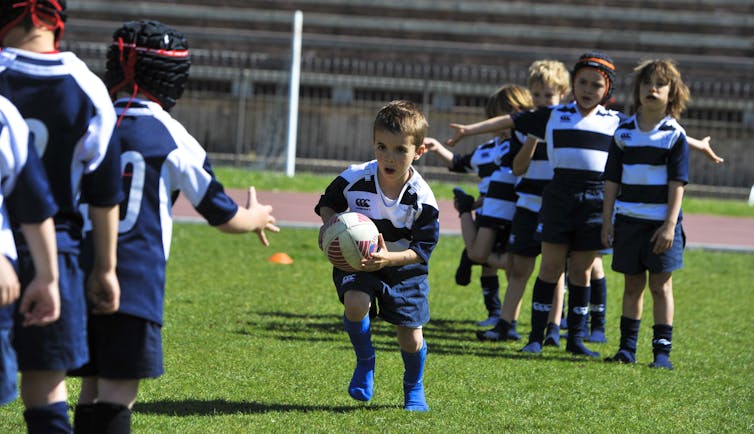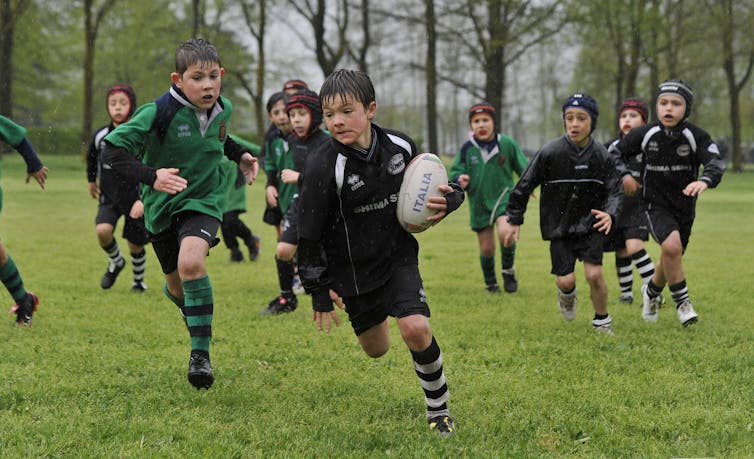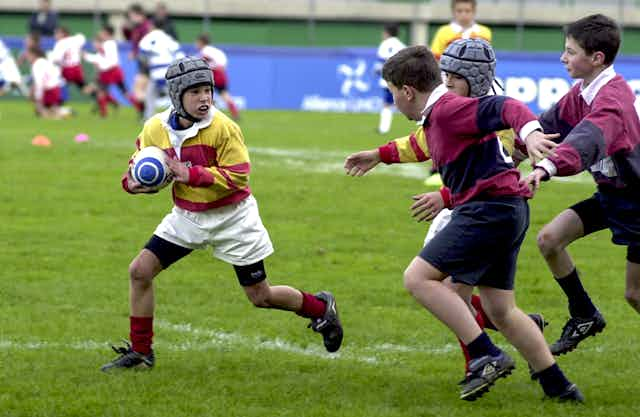Rugby, with its rucks and its mauls, its scrums and its tackles, is considered one of the most physical sports played in schools.
Head injuries and concussions pose a serious threat to the welfare of young players. And research has shown that at youth level, on average between one and two players from each team will suffer a concussion every season. This is significantly higher than other contact sports such as ice hockey and American football.
The fears around concussion and head injuries in young players has led to calls for tackling to be banned at a school level. It has also no doubt caused some parents to rush to the shops to buy protective headgear for their children to wear during games and training.
But as our recent research shows, wearing protective headgear may actually result in an increased risk of injury. This means that at the youth level, parents may insist on their child wearing headgear in the belief they are helping to reduce the injury risk, when in fact the opposite could be true.
Reckless tackling
Previous research already shows that although headgear may protect against minor superficial head injuries – such as lacerations and abrasions – it does not reduce the incidence of concussion.
Similarly, our new research, published in BMJ Open Sport & Exercise Medicine found that some rugby players seem to wear protective headgear to give them the confidence not to worry about getting injured. And that as a result, players may display reckless tackling behaviours that may increase the risk of serious injuries such as concussions.

But the issue of concussion in rugby is not just limited to the youth game. The highest incidence of rugby-related concussions is seen at the community or sub-elite level which is the largest section of adults who play rugby.
So if tackling was banned in schools, it could mean that many players choosing to play at this adult level may not have experienced fundamental coaching on how to tackle. This is an important point, because research based on South African youth players found that poor tackle technique is more likely to result in a tackle leading to a head injury.
Given this, and the fact that most injuries in rugby occur during the tackle (up to 64%), rather than an outright ban on tackling, strategies aimed at making the tackle safer appear to make the most sense.
Coaching the tackle
In this way, player and coach education strategies to reduce injury rates have been found to be effective – particularly with youth players. Most notably the RugbySmart scheme in New Zealand and the BokSmart scheme in South Africa. The two schemes share similar programme structures and aim to educate coaches and referees in an attempt to prevent serious injuries to players. The Boksmart intervention, for example, resulted in a 40% reduction in catastrophic injuries in a group of junior players.

Correct head placement, using the shoulder, and driving the legs in contact have all been found to be technique factors associated with a reduced risk of a concussive tackle. Which is why initiatives aimed at coaches, teachers and referees should focus on ensuring safe tackling behaviours are adopted and retained by youth players.
And positively, research has actually found that junior players value tackle training and the time spent on techniques to help reduce injury. This is encouraging because children who are taught correct technique from a young age are more likely to retain safe tackle behaviours if they continue to play rugby. And this of course helps to reduce injury rates, and makes the sport safer at all levels of the game.

